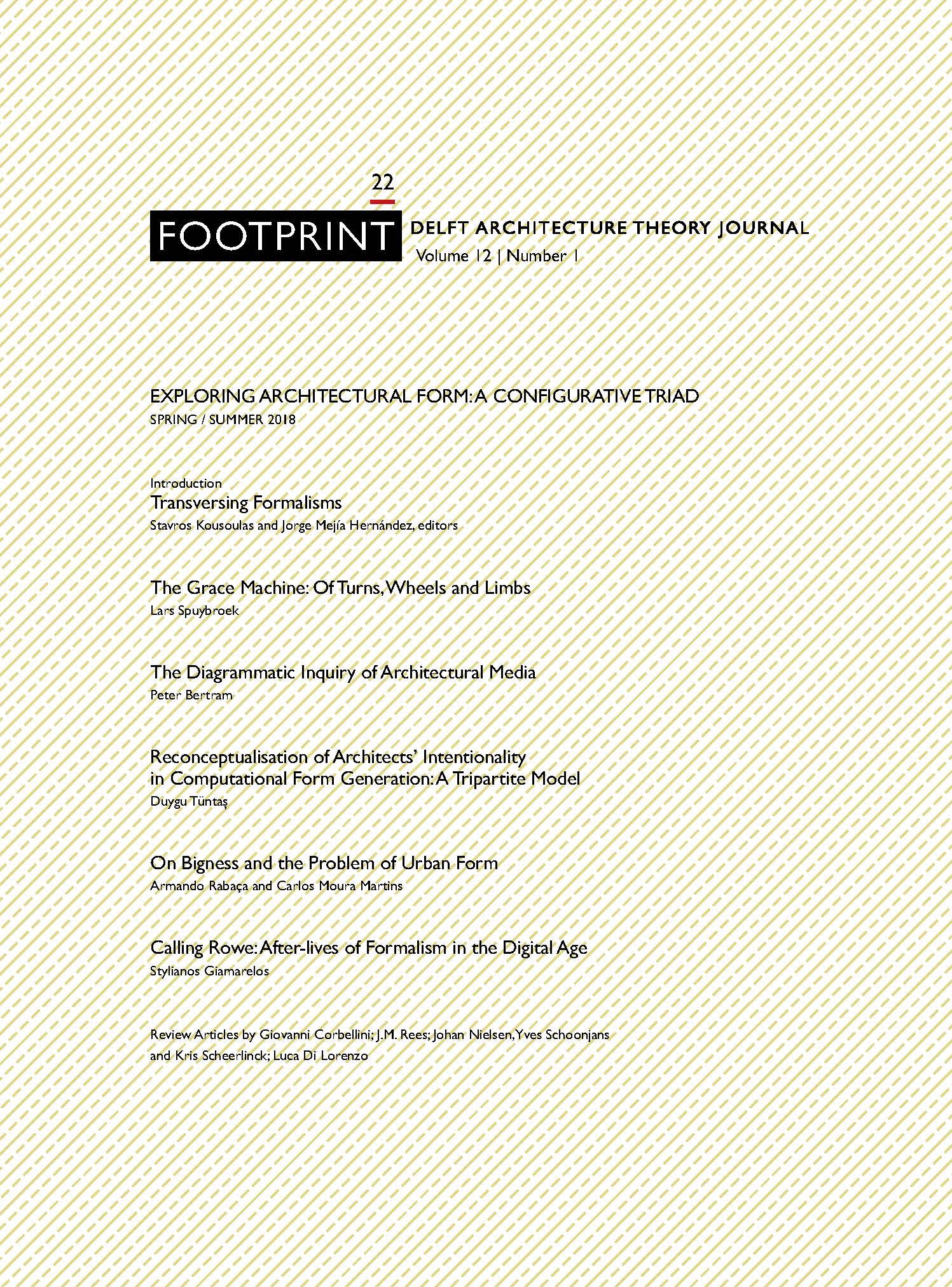Transversing Formalisms
DOI:
https://doi.org/10.7480/footprint.12.1.1969Abstract
In the editorial introduction of this issue of Footprint, the question of architectural form is approached from a population of minor perspectives. Inspired by Bateson’s metalogues, the authors wish to bring forward multiple questions on architectural form instead of a single generalizing one: from ‘what is form’ to ‘how, when, where and why is form’. In this respect, they examine the ways for a possible reconciliation between the genetic and the generic, between the discursive outlines of various formalisms, opting for an approach that is both syncretic and transversal. Committed to architectural form, they conclude by claiming that it stands for much more than simply a concept. Form, in its ambiguity and heterogeneity, stands for a shared problem, one that brings together disciplines, schools of thought and variant methodological practices, turning therefore the discursive constraints of the past in productive chances for the future.
References
Gregory Bateson, Steps to an Ecology of Mind, (Chicago: University of Chicago, 2000)
Adrian Forty, Words and Buildings: A Vocabulary of Modern Architecture, (New York: Thames and Hudson, 2000)
Hélène Frichot. “Daddy, Why Do Things Have Outlines? Constructing the Architectural Body.”in Arakawa & Gins, A Special Issue of Inflexions, n. 6., ed. J. Keane & T. Glazebrook, (January 2013)
Mario Gandelsonas, “Neo-Functionalism” in Oppositions, vol. 5, Summer 1976, (Cambridge, Massachusetts: The MIT Press, 1976)
K. Michael Hays (ed.), Oppositions Reader, (New York: Princeton Architectural Press, 1998)
Deborah Hauptmann and Andrej Radman, “Asignifying Semiotics as Proto-Theory of Singularity: Drawing is Not Writing and Architecture does Not Speak” in Asignifying Semiotics: or How to Paint Pink on Pink”, Footprint Delft Architecture Theory Journal, issue 14, vol. 8, n. 1, (Delft: Techne Press, 2014)
Sanford Kwinter, “Who’s Afraid of Formalism?” in Form Work: Colin Rowe, ed. C. Davidson, (New York: Anyone Corporation, 1994)
Carlos Marti Aris, Las Variaciones de la Identidad, (Barcelona: Ediciones del Serbal, 1993)
W.J. T. Mitchell, “The Commitment to Form; or, Still Crazy after All These Years” in PMLA, vol. 118, n. 2, (New York: MLA, March 2003)
Downloads
Published
Issue
Section
License
- Authors retain copyright and grant the journal right of first publication with the work simultaneously licensed under a Creative Commons Attribution License that allows others to share the work with an acknowledgement of the work's authorship and initial publication in this journal.
- Authors are able to enter into separate, additional contractual arrangements for the non-exclusive distribution of the journal's published version of the work (e.g., post it to an institutional repository or publish it in a book), with an acknowledgement of its initial publication in this journal.




